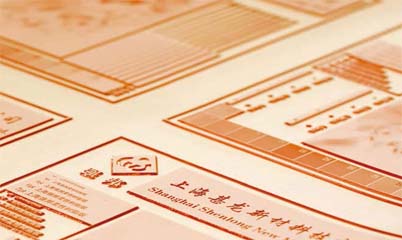Jan 06,2025
Want to know how to make a photopolymer plate? First, a digital image is prepared and output as a film positive. Then, the positive is placed on the photopolymer plate and exposed to UV light. The exposed areas harden. Next, the unexposed polymer is washed away with a suitable solvent. After that, the plate is dried thoroughly. Finally, the plate is post-exposed to complete the curing process and your photopolymer plate is ready for use. This article will take a closer look at the production process of photopolymer plates.

Material Preparation:Photosensitive resin is the core material. It is necessary to select the appropriate type according to printing requirements. For example, flexible photosensitive resin commonly used in flexographic printing has elasticity and printing resistance suitable for printing on different materials. At the same time, it is necessary to prepare the negative film. The quality of the negative film directly affects the plate - making effect. It is necessary to ensure that the pattern is clear and the lines are accurate. High - resolution negative films can be made and output through professional graphic design software. In addition, chemical reagents such as plate - washing solvents and developing solutions need to be equipped. These reagents should be compatible with the selected photosensitive resin.
Equipment Readiness:The plate - making exposure machine is an indispensable piece of equipment. Its power and accuracy determine the exposure effect. The plate - washing machine is used for cleaning after development to ensure that the surface of the plate is clean and free of residues. The drying equipment helps to quickly remove the moisture from the plate and maintain the stability of the plate. In addition, cutting equipment is required to cut the plate to the appropriate size.
Negative Film Production:Use professional graphic design software to carefully design the printing pattern or text. After completion, output the negative film through a high - precision film recorder or laser imagesetter. Positive films are used for making relief plates, and negative films are used for making intaglio plates. Attention should be paid to the contrast and clarity of the negative film to ensure that the details of the pattern are completely presented.
Plate Preparation:Carefully take out the photosensitive resin plate from the packaging and place it on a flat workbench. Carefully check whether there are scratches, stains, or other defects on the surface. If there are minor defects, you can gently wipe them with a soft cloth, but be careful not to damage the photosensitive layer. According to actual printing requirements, use cutting equipment to accurately cut the plate to the appropriate size to ensure that the edges are neat.
Exposure Process:Closely attach the emulsion side of the negative film to the photosensitive surface of the photosensitive resin plate. To ensure that there are no air bubbles, a vacuum adsorption device can be used. Then put it into the plate - making exposure machine. According to the characteristics of the photosensitive resin and the power of the exposure machine, accurately set the exposure time and intensity. Generally, for common flexible photosensitive resin plates in an exposure machine with a power of 1 - 2kW, the exposure time is controlled within 3 - 8 minutes. During this process, the resin undergoes a polymerization reaction under the irradiation of light, shaping the printed graphic part.
Development Operation:After exposure, put the resin plate into the developing solution. The unexposed resin part will be dissolved, so that the graphic part is clearly revealed. The development time needs to be adjusted flexibly according to the resin type and plate thickness, usually within a few minutes. During this period, a soft brush can be used to gently wipe the surface of the plate to assist in the dissolution of the unpolymerized resin, but be careful not to damage the exposed graphics.
Cleaning and Drying:After development, thoroughly clean the plate with clean water or a special plate - washing solvent to remove the remaining developing solution and dissolved resin residues. After cleaning, place the plate in a ventilated place to dry or use drying equipment to dry it. The drying temperature should be moderate, generally controlled at 40 - 60°C. The time is adjusted according to the plate thickness and water content, about 10 - 30 minutes, to prevent the plate from deforming due to excessive temperature.
Post - treatment Process:Conduct a comprehensive inspection of the dried resin plate to check whether the graphics are complete and clear and whether the plate surface is flat. If necessary, grind the edges of the plate to prevent scratching the equipment or operators during the printing process. Finally, install the made photosensitive resin plate on the printing equipment for trial printing. According to the trial - printing effect, fine - tune the printing pressure, ink viscosity, and other parameters until a satisfactory printing quality is obtained.
In conclusion, the production of photosensitive resin plates involves multiple meticulous steps, from material selection to post - treatment. Each step is interlinked, and strict adherence to the process and attention to detail are essential to create high - quality plates that guarantee excellent printing outcomes.
GET A QUOTE